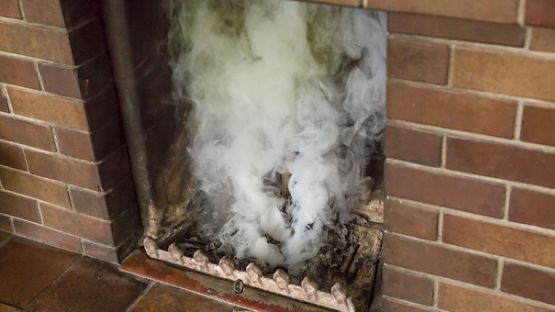Renting a home can offer financial flexibility, but it also comes with the responsibility of protecting your personal belongings. This is where tenant or renters insurance comes into play.
Renters insurance isn't just a nice-to-have, it's an important step in ensuring peace of mind that your belongings are secured in your rental unit.
Key takeaways
- Renters’ insurance policies cover your belongings, personal liability protection and additional living expenses coverage in case you’re unable to live in your rental unit in the event of a claim.
- Build and regularly update a detailed inventory of your belongings to ensure your insurance coverage reflects their current value.
- Not having the coverage you need can be costly in case of a claim. Work with your insurance representative to balance your coverage needs with affordable premiums.
Why renter’s insurance is important
Without renter’s insurance, you risk facing significant financial burdens if something goes wrong. Whether it’s theft, fire or other unexpected events, replacing all your belongings at once could be a massive headache.
Beyond personal belongings: Liability coverage
Renter’s insurance can also protect you from liability claims if someone is injured in your rental unit. Liability coverage is an important component of most renter’s insurance policies. It helps cover legal fees and damages if you’re found responsible for unintentional injury or damage to the property of someone in your rental unit. Without insurance coverage, you could be on the hook for these costs out of pocket, placing additional financial burden on you.
Additional living expense coverage
Additional living expenses coverage is also covered in most tenant insurance policies. This part of your policy helps cover the cost of temporary housing and other expenses if you are unable to live in your rental unit due to a covered event. It’s a vital part of tenant or renters insurance that ensures you’re not left without a place to stay.
How to determine how much content insurance you need
Determining how much renters' content insurance a tenant will need to cover their property in case of damages can seem difficult – but insurance advisors are here to help. Generally, valuing contents can be done by answering the question, “How much would my things cost to replace today”?
Insurance providers can help you understand the value of your renters' content insurance, but you can also employ certain measures yourself. A great way to track how much your things are worth is to start with an inventory of your belongings. This task is often easier after you move as you'll likely have a packing list handy.
Creating a home inventory
Building a home inventory takes the ‘guesstimating’ out of content coverage. It’s an important and helpful step in determining the right amount of renter’s insurance coverage you might need.
Start by listing all your belongings, including details like the item’s description, purchase date and value. Use a spreadsheet or mobile app to organize this information. Don’t forget to take photos and keep receipts, as these can be valuable if you ever need to file a claim. Learn more about how to create a home inventory.
The value of most belongings should be assessed based on how much it would cost to replace them (versus the original cost). This should be easy to calculate, especially when you have a detailed list or inventory of your items. That said, when it comes to unique or high-value items (collectibles, antiques, artwork, jewellery and heirlooms), you may need to have these items professionally appraised to get the numbers right.
Maintaining your home inventory
Your renter’s insurance policy should reflect the current value of your belongings. As you purchase new items or get rid of old ones, make sure to update your inventory. This ensures that your insurance policy remains accurate and that you’re fully covered.
Risks of underinsuring your belongings
It’s natural to want to keep expenses as low as possible. However, when it comes to renters insurance, opting out of coverage could leave you exposed to significant financial risks.
The risk of insufficient coverage
If your tenant insurance policy doesn’t cover the full value of your belongings, you could be left paying out of pocket to replace them. This can be a significant financial burden, especially in the event of a major loss like a fire or burglary.
Balancing coverage and renters’ insurance cost
While it’s important to ensure you have adequate coverage, it’s also important to balance this with affordable renters insurance costs. Work with your insurance representative to find a policy that offers the right level of coverage at a price that fits your budget.
Common misconceptions about renters’ insurance
Let’s debunk some of these common myths so you can make informed choices about protecting your belongings.
‘Renters insurance is mandatory'
While renters insurance policies may not be required by law, many landlords or leases require tenants to have renters insurance. Even if it’s not mandatory, it’s still a smart move to protect your belongings and yourself.
‘I don’t need tenant insurance because I don’t have fancy stuff’
It’s easy to underestimate the value of your everyday items, but replacing them all at once could be costly. Tenant insurance coverage isn’t just for the wealthy; it’s for anyone who wants to avoid the financial burden of replacing their personal property after an unexpected event.
‘My landlord’s insurance covers me’
Another common misconception is that landlord's insurance covers tenant belongings. However, this is not the case: Landlord's insurance only covers the building’s structure, leaving your belongings unprotected without property insurance.
Protect what matters with tenant insurance coverage
When you purchase tenant insurance, you also get peace of mind. In the grand scheme of things, it’s a small investment that can save you from significant financial loss in the event of an unexpected incident. Make sure to review your policy options and choose the coverage that best fits your needs.
Give yourself peace of mind with tenant insurance coverage from Aviva. You’ll get the insurance coverage you need for the things that matter most to you. Get a tenant insurance quote today.













